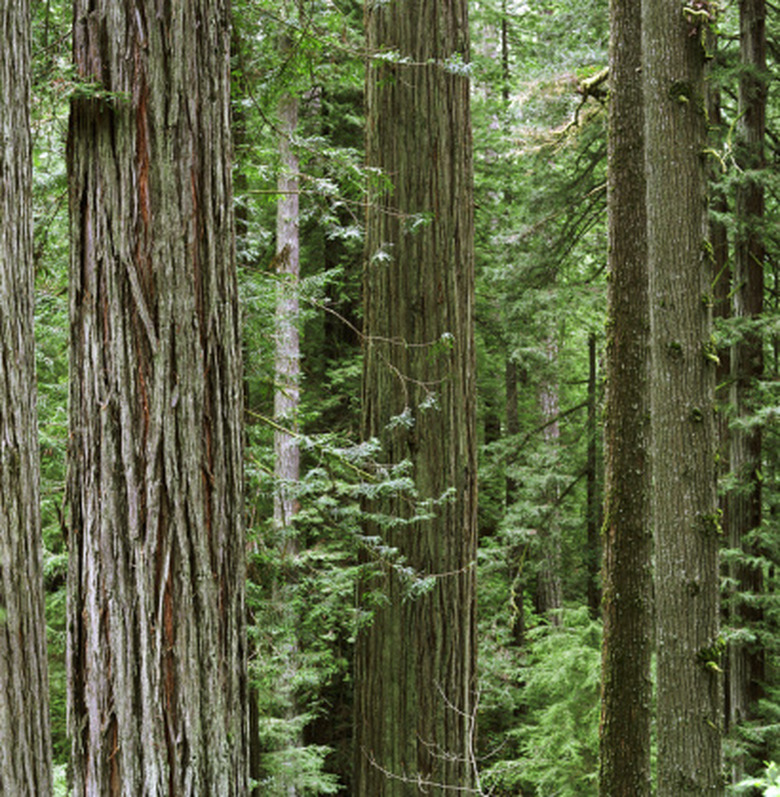Abiotic Factors In The Redwood Forest Ecosystem
In biology, an abiotic factor is any nonliving thing that makes life possible or has helped create an environment for life to develop. Abiotic factors include weather, temperature, chemical components, gases and geological features such as rocks and minerals. The Redwood Forest, located less than 400 miles north of San Francisco, is one of the rarest ecosystems in the world. Home to towering redwoods that are hundreds of years old and measure almost 400 feet tall, this area of almost 400,000 acres has flourished due to a collection of abiotic factors.
Temperature
Temperature
The cool temperatures along California's northern coast plays an important role in the Redwood Forest ecosystem. Generally influenced by the Pacific Ocean, the temperatures in and around the forest are mild year-round, with an average range of 40 degrees to 60 degrees F. Southern portions of the forest are frost-free and do not get snow, though some extreme northern areas do get frost in winter. The temperatures are vastly different from the warmer conditions throughout the rest of the state.
Precipitation
Precipitation
The redwoods sit along the California coast and extend into southern Oregon, one of the rainiest areas in the United States. The annual precipitation varies greatly and can be as little as 40 inches per year to 100 inches per year. The average annual precipitation of 71 inches means the area receives more precipitation than many other parts of the state. The large redwoods are treated to rain in the winter and a near-constant blanket of fog in the summer, when rainfall drops off dramatically. This fog keeps the trees watered during the driest and warmest parts of the year and, as in condenses on the leaves, provides moisture for other plants and animals on the forest floor.
Soil
Soil
The soil a redwood lives in can play a big part in its age, which can range from 500 to 700 years. The soil within the Redwood Forest ranks as some of the most nutrient-rich in the country. After the trees shed leaves, the leaves decompose on the forest floor. This decomposing matter releases nutrients back to the soil, keeping it rich. Due to their large size, redwoods require dense, usually loamy, soil. Considered the most ideal for growth, loamy soil is composed of rock particles and other material. It is gritty but drains well and gives excellent support to the deep root systems typical of redwoods.
Cite This Article
MLA
John, Sara. "Abiotic Factors In The Redwood Forest Ecosystem" sciencing.com, https://www.sciencing.com/abiotic-factors-in-the-redwood-forest-ecosystem-13428999/. 21 July 2017.
APA
John, Sara. (2017, July 21). Abiotic Factors In The Redwood Forest Ecosystem. sciencing.com. Retrieved from https://www.sciencing.com/abiotic-factors-in-the-redwood-forest-ecosystem-13428999/
Chicago
John, Sara. Abiotic Factors In The Redwood Forest Ecosystem last modified August 30, 2022. https://www.sciencing.com/abiotic-factors-in-the-redwood-forest-ecosystem-13428999/
